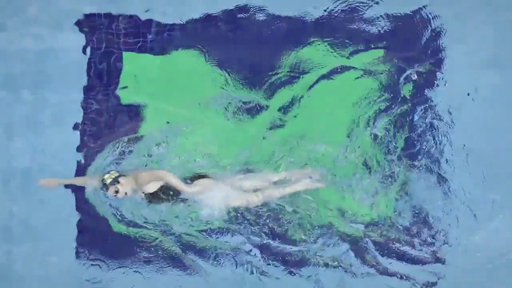7 Fostering a broad identity
Parents can also help their athlete children by adopting a strategy which aims to foster multiple identities. This helps to overcome the risks associated with a unidimensional athletic identity which was covered in Session 3. In Activity 6 you will examine a short story about Kally Fayhee (swimming) who describes her six-year-old self and then later life as a top university swimmer.
Activity 6 The case of Kally Fayhee (swimming)
Watch this video in which you hear how Kally Fayhee grew up wanting to be an Olympic athlete and how she ended up viewing her swimming training at the University of Michigan.
What were the important aspects of her athletic life? Do they suggest that her identity was narrow or broadly defined?

Transcript: Video 5
Discussion
Fayhee’s description starts with the metaphor of swimming against a (water flume) current in which striving to overcome the current is constant. She talks more about identity when describing her sixteen-year quest to become an Olympian since the age of six. She says she defined herself by numbers (e.g. distances, times, strokes) and a pursuit of the right training formulae. She was aiming to reach her goals and to be accepted by others. This short clip suggests an athletic identity that is perhaps narrower than that of many other athletes, although this clip is only a snapshot.
Thinking about someone like Fayhee, deeply immersed in their training, what prevention strategies might you put in place in supporting athletes to create more balanced identities to reduce their burnout risk?
DeFreese et al. (2015) make three suggestions:
- Communicate and demonstrate, perhaps through example, that everyone can strongly identify with multiple roles (e.g. athlete, family member, community member, student, responsible citizen).
- Encourage athletes to develop other aspects of their lives beyond sport and provide appropriate support for this.
- Help athletes put sport performance into a holistic life perspective.
This is one area where parents – and to some extent coaches – can have enormous influence. To conclude this session, you will now consider an infographic that underlines the key importance of the third strategy – helping children to develop a healthy relationship with sport.
